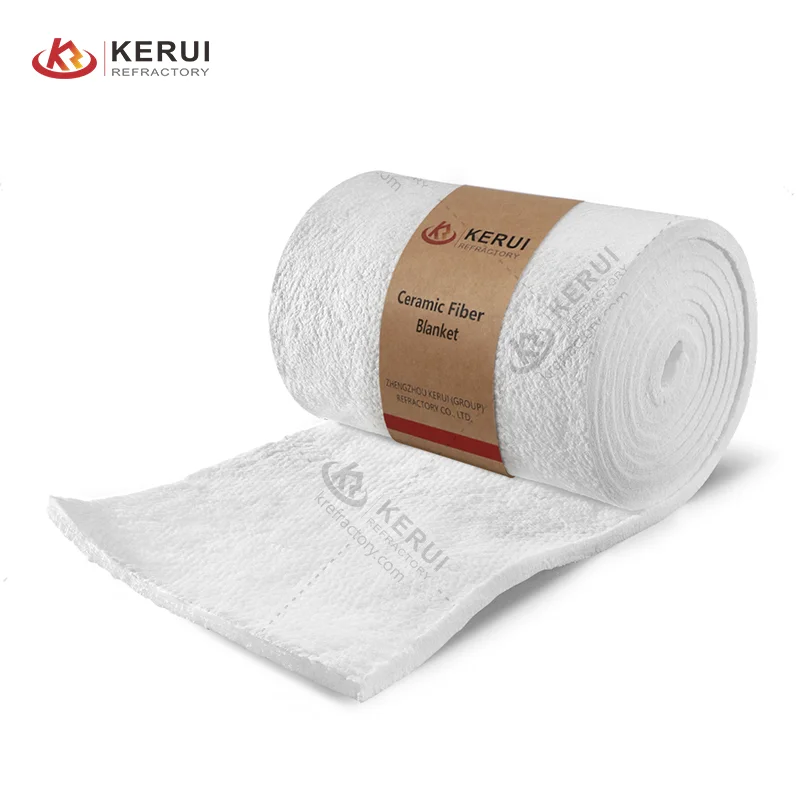Article Navigation
- Introduction to Ceramic Fiber Blankets
- Classification by Temperature and Composition
- Key Technical Properties
- Applications Across Industries
- Installation and Handling Best Practices
- Safety and Environmental Considerations
- Case Studies and Future Trends
1. Introduction to Ceramic Blanket
Ceramic fiber blanket (CFB) is lightweight, high-temperature insulation materials made from alumina-silicate fibers. With thermal stability up to 1430°C and low thermal conductivity, they are widely used in furnaces, boilers, and aerospace systems. This guide covers CFB types, performance metrics, and industrial applications, providing actionable insights for engineers and procurement professionals.



2. Classification by Temperature and Composition
Ceramic Blanket Insulation are categorized based on maximum service temperature and chemical composition:
| Type | Temperature Range (°C) | Al₂O₃ Content (%) | Key Features |
|---|---|---|---|
| Standard Grade | 950–1100 | 45–47 | Cost-effective, general-purpose insulation |
| High-Purity | 1100–1260 | 47–49 | Improved thermal shock resistance |
| Zirconia-Enhanced | 1260–1430 | 52–55 + ZrO₂ | Superior high-temperature stability |
| Alkali-Resistant | 800–1000 | 40–42 + CaO/MgO | Resists corrosion in cement/glass kilns |
3. Key Technical Properties
3.1 Physical and Thermal Performance
| Parameter | Test Standard | Typical Range | Importance |
|---|---|---|---|
| Density | ASTM C167 | 64–128 kg/m³ | Affects insulation and load capacity |
| Thermal Conductivity | ASTM C201 | 0.05–0.12 W/m·K (at 500°C) | Determines energy efficiency |
| Tensile Strength | ASTM C1335 | 50–150 kPa | Critical for mechanical durability |
| Linear Shrinkage | ASTM C356 | <3% (24 hrs at max temp) | Indicates long-term stability |
3.2 Chemical Resistance
- Acid Resistance: Performs well in sulfurous environments (e.g., petrochemical heaters).
- Alkali Resistance: Alkali-treated CFBs withstand cement kiln vapors.
- Moisture Sensitivity: Requires waterproof coatings in humid environments.
4. Applications Across Industries
4.1 Metallurgy
- Furnace Linings: Backup insulation behind firebricks in steel reheating furnaces.
- Ladle Covers: Reduces heat loss during molten metal transfer.
4.2 Power Generation
- Boiler Insulation: Wrapped around superheaters and economizers (650–900°C zones).
- Gas Turbines: Thermal barrier in combustion chambers.
4.3 Petrochemical
- Cracker Furnaces: Insulates radiant coils in ethylene production.
- Pipe Insulation: Prevents heat loss in high-temperature pipelines.
4.4 Aerospace
- Rocket Nozzles: Protects structures from exhaust gases (>1200°C).
- Aircraft Engines: Fireproofing in auxiliary power units (APUs).
5. Installation and Handling Best Practices
5.1 Installation Methods
| Method | Description | Ideal Thickness (mm) |
|---|---|---|
| Layered Stacking | Multiple layers with staggered joints | 25–50 per layer |
| Anchor Fixation | Metal anchors for vertical/horizontal surfaces | 50–100 |
| Vacuum Forming | Pre-shaped modules for complex geometries | Custom |
5.2 Safety Protocols
- Personal Protective Equipment (PPE): Gloves, masks, and goggles to prevent fiber irritation.
- Cutting Tools: Use electric knives or serrated blades to minimize dust.
6. Safety and Environmental Considerations
6.1 Health Risks
- Airborne Fibers: Classified as Group 2B (possibly carcinogenic) by IARC. Mitigate via:
- Wet cleaning during installation.
- Encapsulation with protective coatings.
6.2 Sustainability
- Recyclability: Spent CFBs can be processed into board or paper products.
- Low Biopersistence: New bio-soluble fibers (e.g., SiO₂-CaO-MgO) degrade safely in lungs.
7. Case Studies and Future Trends
7.1 Case: Aluminum Smelter Roof Insulation
- Challenge: Excessive heat loss (original rock wool, 150 mm thick).
- Solution: Replaced with 100 mm zirconia-enhanced CFB.
- Result: 25% energy savings and 8-year lifespan.
7.2 Emerging Innovations
- Nanofiber Blends: SiO₂ nanofibers reduce thermal conductivity to 0.03 W/m·K.
- IoT Integration: Smart CFBs with embedded sensors for real-time thermal monitoring.





